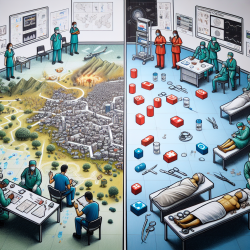Autism significantly affects mental health and lowers subjective well-being (SWB). Traditional therapies often fall short of engaging children effectively. Enter Image-Sandplay Therapy, a unique intervention that combines the therapeutic benefits of sandplay with image therapy, creating a powerful tool for rehabilitation.
Why Image-Sandplay Therapy?
Image-Sandplay Therapy involves children using sand and various toys to create scenes in a sand table. This process allows them to project their inner thoughts and feelings, which therapists can then interpret and guide. The therapy is conducted in a safe, relaxed environment, making it more engaging for children compared to traditional methods.
Key Findings from the Study
- Improved Mental Health: The study found that children who underwent Image-Sandplay Therapy showed significant improvements in their Autism Treatment Evaluation Checklist (ATEC) and Autism Behavior Checklist (ABC) scores.
- Enhanced Subjective Well-Being: Children reported higher satisfaction with life and more positive emotions, alongside a reduction in negative emotions.
- Behavioral Improvements: Lower scores in conduct problems, learning problems, and psychosomatic disorders were observed in the children who participated in the therapy.
Implementing Image-Sandplay Therapy
For practitioners looking to incorporate this therapy, here are some steps to get started:
- Set Up a Sandplay Room: Ensure the room is equipped with sand tables, a variety of toys, and a comfortable setting.
- Training: Practitioners should undergo training in sandplay therapy to effectively guide and interpret the sessions.
- Session Structure: Each session should include an initial stage to build trust, a creation stage where children freely play, and a sharing stage to discuss their creations.
Encouraging Further Research
While the study shows promising results, further research can help refine and expand the therapy’s applications. Practitioners are encouraged to conduct their own studies and share findings to contribute to the growing body of knowledge.
To read the original research paper, please follow this link: Effects of Image-Sandplay Therapy on the Mental Health and Subjective Well-Being of Children with Autism.










